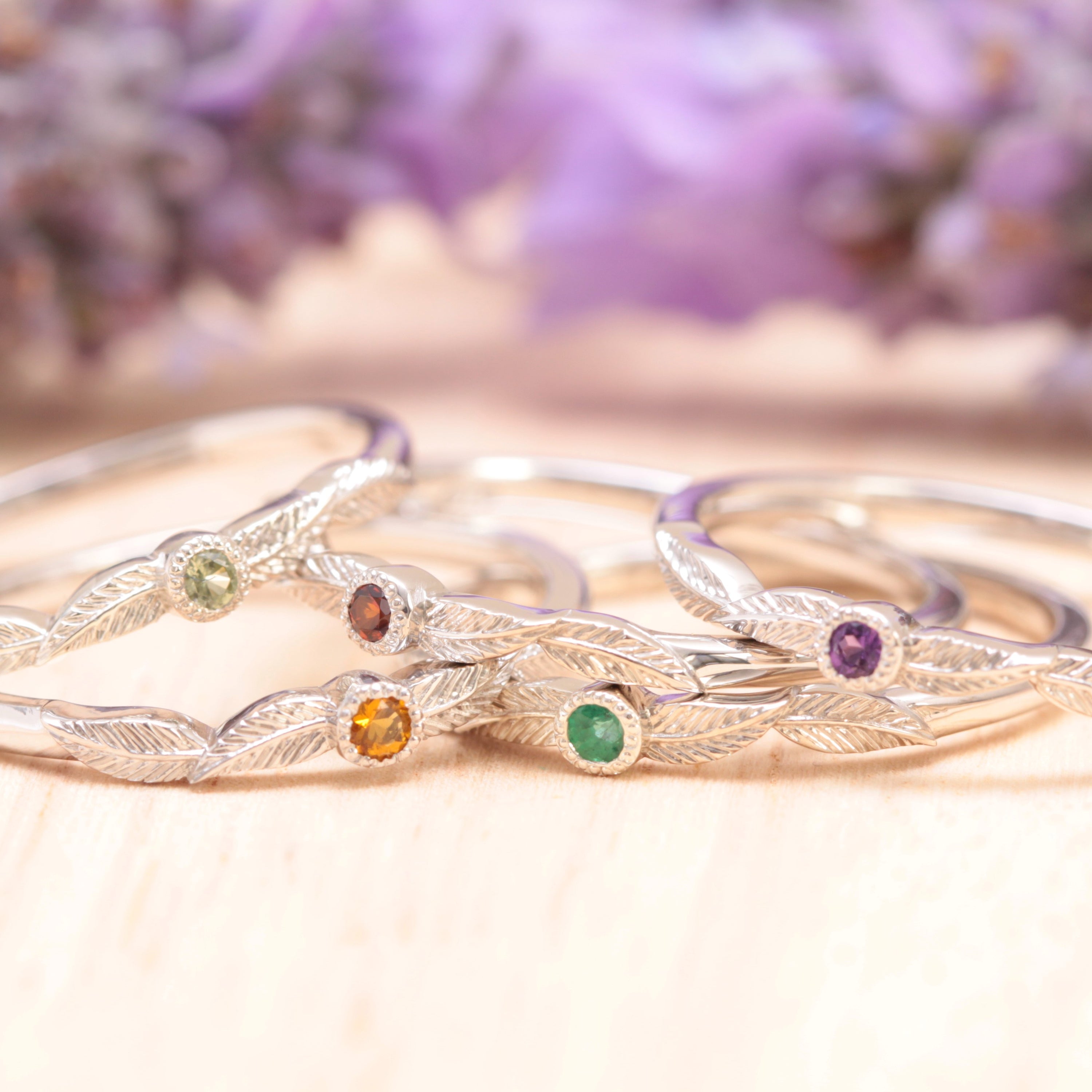This month we're launching our latest beauties - the Birthstone Collection (yay!). So we thought we would give you a quick history of Birthstones.
If you have ever given or received birthstone jewelry, you are following a tradition that dates back to the first century AD. Originally, the wearers assumed that birthstones had special powers. Now, we see them as fashionable ways to express our individuality, and some believe that the way they wear their birthstones can have a subtle effect on their health and spiritual well-being.
Origins of Birthstones
Official Modern Birthstones
In 1912, birthstones became official when the National Association of Jewelers in the United States. For 90 years, the list of birthstones remained the same until tanzanite was added by the American Gem Trade Association. It became the third birthstone for the month of December.
Currently, there are three lists of birthstones. The ancient birthstones have been used since the days of Aaron the Priest. The traditional list has been used for 500 years, and the modern list has been used since 1912.
The Powers of Birthstones
When birthstones were selected, they were believed to have special powers that helped the people who wore them. The first three birthstones, the garnet, amethyst, and aquamarine were chosen because they offered safe travels, courage, and healing powers. The diamond and emerald of April and May brought love, while the pearl of June offered purity.
In the second half of the year, the July ruby scared away evil, and the August peridot brought strength. The September sapphire also scared away evil. In October, the opal represented confidence. The November topaz represented love, and the December turquoise was all about luck.

Birthstone Folklore
The Modern and Ancient Birthstones
The modern list of birthstones includes
- January: Garnet
- February: Amethyst
- March: Aquamarine
- April: Diamond
- May: Emerald
- June: Alexandrite, Moonstone, Pearl
- July: Ruby
- August: Peridot, Spinel
- September: Sapphire
- October: Opal, Pink Tourmaline
- November: Citrine, Topaz
- December: Tanzanite, Blue Zircon, Turquoise
The ancient and traditional birthstones include
- January: Garnet, Hyacinth
- February: Amethyst, Hyacinth, Pearl
- March: Bloodstone, Jasper
- April: Diamond, Sapphire
- May: Agate, Emerald
- June: Agate, Chalcedony, Emerald, Pearl, Turquoise
- July: Carnelian, Onyx, Ruby, Turquoise
- August: Carnelian, Moonstone, Sardonyx,Topaz
- September: Chrysolite, Sardonyx, Zircon
- October: Aquamarine, Beryl, Coral, Opal
- November: Cat’s Eye, Pearl, Topaz
- December: Bloodstone, Chrysoprase, Lapis Lazuli, Ruby
Inspired by birthstones? Check out our sweet Birthstone collection






